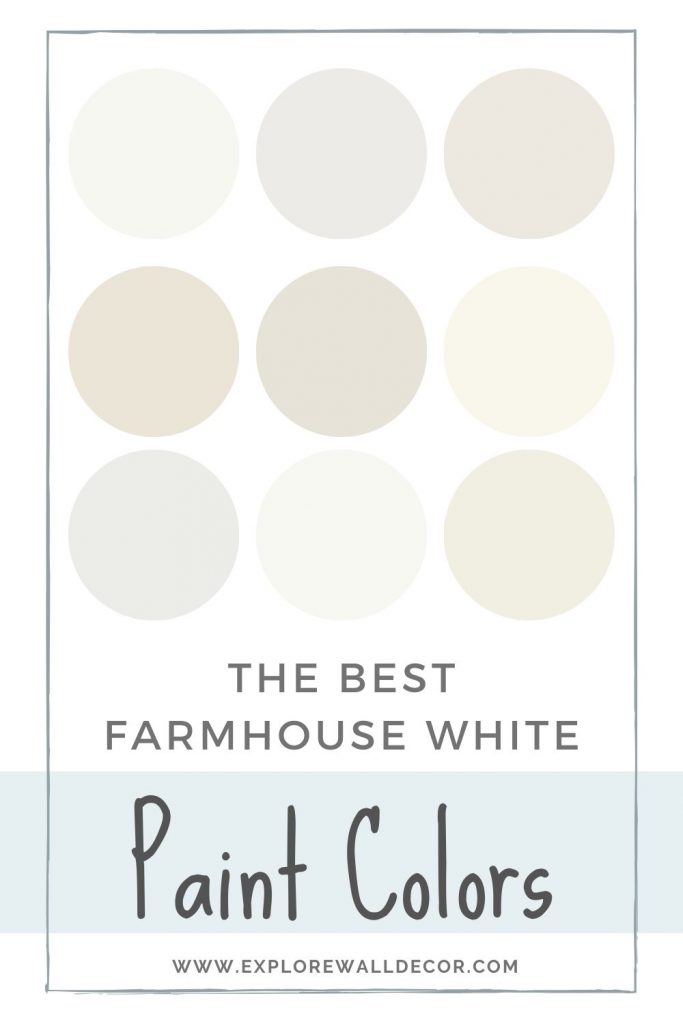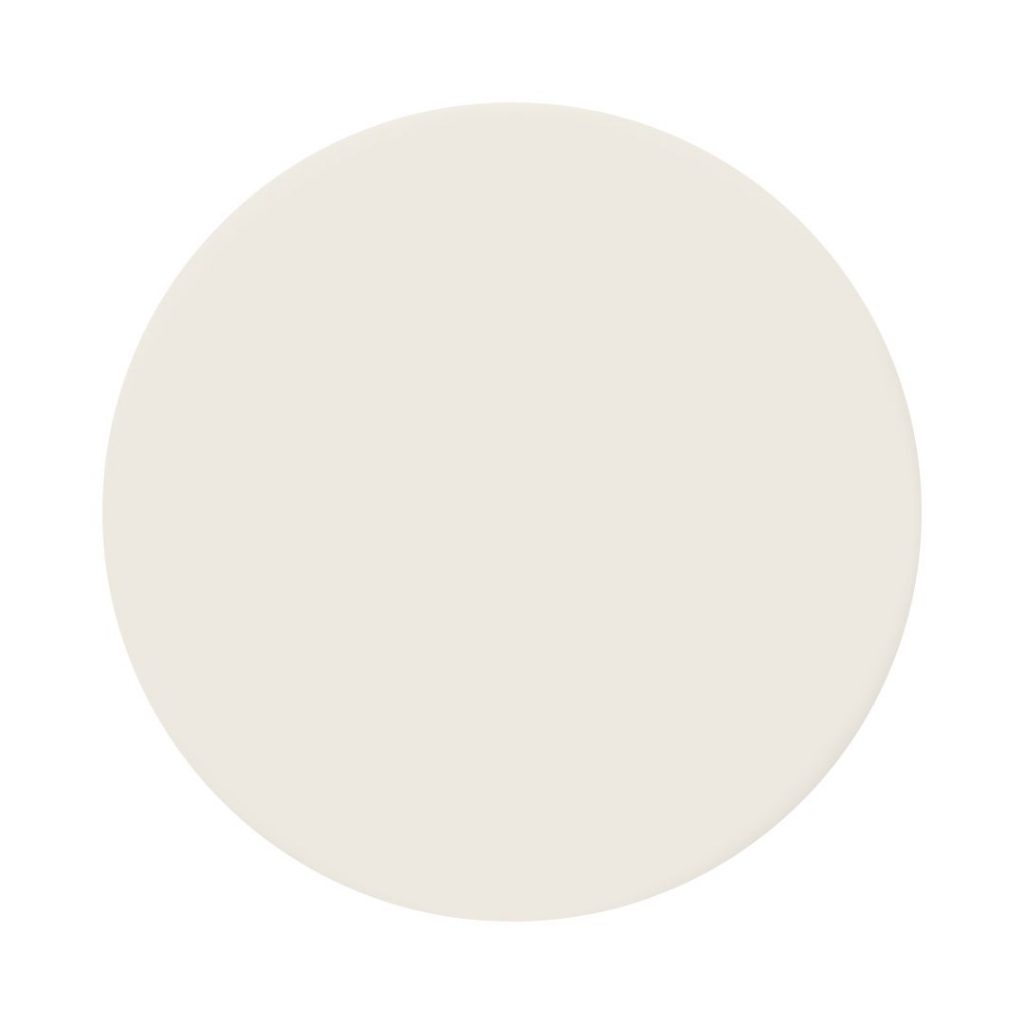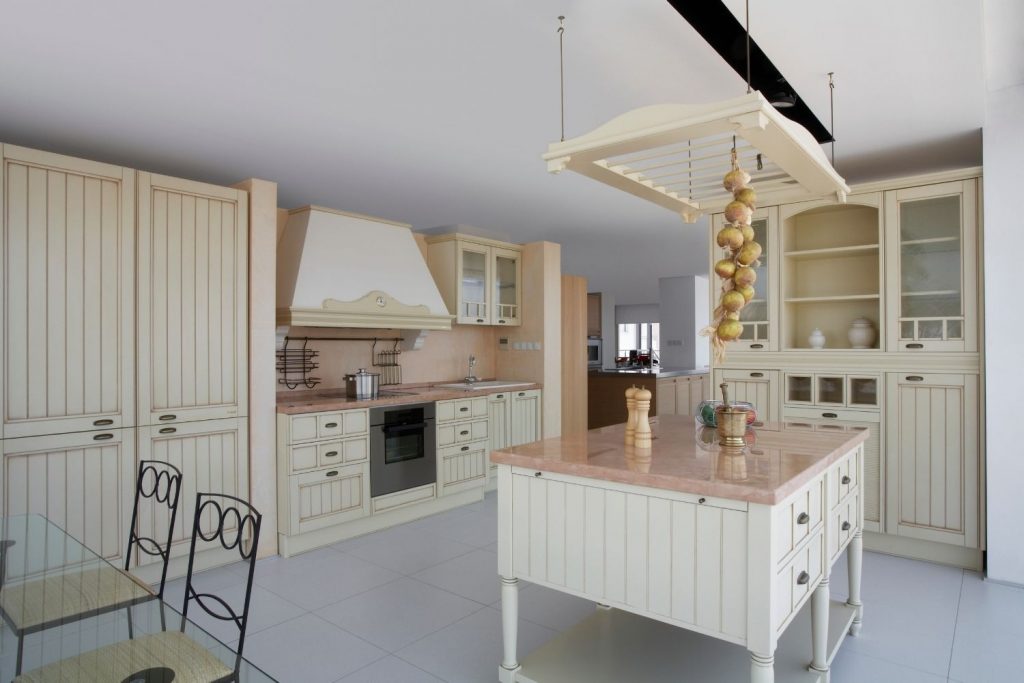Thinking about decorating your home in the modern farmhouse style? Then you might be looking for the absolute BEST farmhouse white paint color to use throughout your home.
While you can absolutely bring a little color into your farmhouse style interior, whether through paint or accessories, white is one of the most popular wall colors in this cozy, country style home.
White is a great choice due to its versatility — and, believe it or not, there are actually LOTS of different whites to choose from!
Which is why you’re here, right??
You’re on the hunt for the perfect white paint color for your home…and that’s why WE’RE here. To help you find it.
Don’t worry — we’ll get to the list of the best modern farmhouse white paint colors shortly. But first, let’s talk a little bit about what exactly that modern farmhouse interior looks like.

This post may contain affiliate links and we may earn commissions when you click on the links at no additional cost to you. See our disclosure policy for more details.
What Exactly is the Farmhouse Style?
The farmhouse style is all about comfort and warmth; while the classic farmhouse look is evocative of homesteads with vintage touches, the modern farmhouse isn’t quite as rustic.
The modern farmhouse is all about simplicity: older, timeless pieces with lots of character and soft, muted hues. You’ll see a lot of earth tones in this style: soft whites, greens, blues, and greiges.
It’s all about pairing salvaged materials and comfortable furniture. In addition to earthy toned paints, you’ll often see barnwood, subway tile, and shiplap on the walls, along with older, timeless pieces that hold a lot of character.
So, why is the country/farmhouse style so popular?
- It’s versatile and mixes well with other style decor.
- The time-worn look works well for families with small children.
- It gives the home a warm and comfortable feel.
Now, let’s move on to the top modern farmhouse white paint colors….
Best Farmhouse White Paint Colors
Again, you’ll see a lot of white in the farmhouse style interior, which is why we’re here today. Obviously, we can’t cover every single “farmhouse white” from every brand out there…
So, we’re just going to cover some of the white colors within two of the most popular paint brands on today’s market. Let’s start out with the best farmhouse white paint colors by Sherwin Williams, then we’ll move on to Benjamin Moore’s best whites.
*Quick note on Light Reflectance Value: LRV runs on a scale of 0% to 100%, and 50% would be a mid-value paint color. The higher the LRV, the more light a color reflects back into the room.
Farmhouse White Paint Colors by Sherwin Williams
Here are some of Sherwin Williams’ top farmhouse white paint colors.
High Reflective White (SW 7757)

LRV: 93
High Reflective White is the whitest white in Sherwin Williams’ collection. It’s a clean white that does have a touch of warmness, but doesn’t tend to look yellow at all.
Order a sample of High Reflective White

LRV: 84
Pure White is a soft, clean, neutral white that isn’t stark or creamy. It can pick up color from its surroundings, and can look vastly different at different times of day.

LRV: 82
A softer white, Alabaster has light cream/pale green undertones. It typically looks best with other colors that have warm undertones.

LRV: 76
Looking to make your space feel a little cozier? Consider Ivory Lace. Ivory Lace is a warm, creamy white with slightly yellow undertones.

LRV: 77
Pearly White is a fairly neutral white, meaning it isn’t terribly warm or cool, although it can look pinkish or peachy in certain lighting.
Order a sample of Pearly White
Farmhouse White Paint Colors by Benjamin Moore
And below are some of the best farmhouse whites from Benjamin Moore.

LRV: 92
This is a popular choice for nearly any interior surface! Highly reflective, Simply White has a noticeably yellow undertone, which can really feel warm in a South facing room.
Order a sample of Simply White

LRV: 85
Decorator’s White is a softer white paint color. Due to its purple/blue undertones, it’s best paired with cooler colors than those with yellow undertones.
Order a sample of Decorator’s White

LRV: 92
With very little undertone, Chantilly Lace is one of Benjamin Moore’s whitest whites. While it can look a little warmer in a South facing room, Chantilly Lace actually has just a tinge of blue or gray pigment, keeping it from looking yellow.
Order a sample of Chantilly Lace

LRV: 85
White Dove is a creamy, neutral off-white that looks great in homes with lots of light, and it works really well on both walls and trim. Keep in mind that it could look a little drab in darker spaces.
Why Are There So Many Different White Paints?
White is white…right? Well, not exactly. White is one of the most popular paint colors for interiors, but many of them aren’t true whites.
Due to creative choices by paint manufacturers, most white paints have various undertones — in other words, a tiny bit of pigment that makes it look slightly different when compared to another white paint.
The most common pigment colors, or “undertones”, are:
- Yellow
- Green
- Blue
- Pink
- Gray
A white paint could look warmer or cooler, depending on the undertone(s) in any given white paint, along with its surrounding materials and the room’s lighting.
When choosing a white paint color for your home, you’ll want to look at some of your favorite whites next to each other to determine what color undertones they have. Be sure to sample your top choices before making your ultimate decision.
Which leads us to our next topic…how to choose the perfect white paint.
How to Choose the Perfect White Paint
Now, let’s go over a few tips for choosing the perfect farmhouse white paint color. But honestly? These tips will come in handy no matter what color you’re considering. No matter your decorating style, farmhouse or not, you’ll still want to consider these suggestions.
Paint the Walls Last
Before you finalize your paint color, be sure that you’ve selected all the materials that aren’t as easy to replace: flooring, trim, appliances, etc. These things will influence the wall color you choose.
It’s much easier to do it this way than to choose your paint color first and try to design everything else around it.
You’ll want to ask yourself:
- Do the existing materials have cool or warm colors?
- What color are their undertones?
- What kind of mood am I hoping to evoke?
Next, grab a sample of each color you’re considering….
Sample Before Committing
The best way to save yourself time and money — and choose a wall color that you won’t regret? Sample, sample, sample.
Most paint stores carry small sample paint colors (or even large stick-on samples) that you can put right onto the wall. Sampling will give you a real-life representation of what your wall will look like once it’s been painted.
Use code FIRSTFIVE for a discount on your first Samplize order!
Try your colors out on each wall you plan on painting — multiple times a day — to see how they look in different types of lighting from all different angles.
Understand Color Schemes
There are six different types of color schemes. Each one is based on where the hues are placed on the color wheel.
The color wheel is made up of twelve basic hues:
- Primary colors – red, yellow, blue
- Secondary colors – orange, green, purple
- Tertiary colors – red-orange, yellow-orange, yellow-green, blue-green, blue-purple, red-purple
You can read more about color schemes in this article about how to choose a color palette for any room.
Tips for Using Lots of White in Your Home
Love the look of white-on-white in those decorating magazines, but feeling a little nervous about using too much white in your modern farmhouse? Fear not! You can use lots of white in your home…without it getting boring.
A few ideas for using white on your walls and in your decor:
- Lots of texture! Mix it up with chunky knits, woven materials, and patterns against smoother surfaces.
- Various sheens. You can paint walls, cabinets, doors, and white trim the exact same color, but achieve depth by varying the sheen, or the amount of shininess in the paint.
- Natural elements. Too much white can feel sterile — and that’s where natural elements, such as wood and leather, come in and help to warm up the space.
Finally, introduce color carefully into your space if you’re decorating with lots of white.
“Pops” of primary colors (red, blue, and yellow) can look a little harsh against a white backdrop, and don’t typically fit well into the farmhouse style — although softer, more muted variations of these colors could look stunning.
Again, whites and earth tones are the most common modern farmhouse hues, although you can certainly add in a bit of color — you just have to be much more strategic when bringing it into an all-white interior.
What Are Modern Farmhouse Colors?
Let’s talk a bit about color now…
You’ll see a lot of white in this style of interior (which is probably why you’re here, looking for the best farmhouse white paint colors!).
The best modern farmhouse colors are muted and neutral — not too bright, with the exception of the occasional accent — and they work well in nearly any space.
But you can certainly add in some fun colors, as well! When it comes to farmhouse colors, you’ll also see a lot of earth tones in this style:
- Off White
- Green
- Blue
- Greige
- Black
Any of these colors would work in rooms where you would prefer to put a little color on the walls instead of white. Otherwise, you might consider adding these colors as accents in your furniture or even your cabinet color.
Conclusion
Today, we’ve covered some of the best modern farmhouse white paint colors from two of the leading paint manufacturers. So, which is your favorite?
If you need more paint color ideas, check out the below related articles!
Related:
10 Easy Ways to Add Modern Farmhouse Decor to Your Home
9 Popular Sherwin Williams Farmhouse Paint Colors
9 Benjamin Moore Farmhouse Paint Colors to Try This Year
What are the Most Popular Sherwin Williams Neutral Colors?
Charming Ways to Add Rustic Farmhouse Decor to Your Home



I’m thinking of painting high reflective white on my kitchen cabinets and accessible beige on the walls. I want to do modern farmhouse. Is high reflective white too bright/too white for modern farmhouse or will it work? Thanks.
I think it could absolutely work!